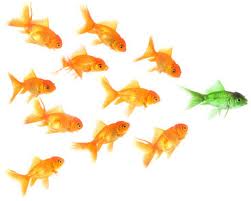By P.R. Sarkar
 (27 March 1988, Calcutta) – The solidarity and unity of a group depends on the strength and determination of the leadership. If the leadership is not strong the entire structure – social, economic and political – becomes weak and ultimately crumbles down. The strong and decisive leadership of Akbar in the first half of the seventeenth century established the Mughal empire on a cohesive foundation. Similarly, the firm and courageous leadership of king Samudra Gupta in the thirteenth century solidly established the Gupta empire from the Himalayas in the north of India to Godabari in the south. Later, due to a dearth of strong leaders, the mighty Magdha empire fell apart. After the death of Akbar the Mughal empire was also Balkanized because of the weakness and inefficiency of subsequent rulers. Eventually, with the rise of Mara tha and Sikh powers, the very bones of the Mughal empire were broken apart in the battles of Panipatha and Sithvalti.
(27 March 1988, Calcutta) – The solidarity and unity of a group depends on the strength and determination of the leadership. If the leadership is not strong the entire structure – social, economic and political – becomes weak and ultimately crumbles down. The strong and decisive leadership of Akbar in the first half of the seventeenth century established the Mughal empire on a cohesive foundation. Similarly, the firm and courageous leadership of king Samudra Gupta in the thirteenth century solidly established the Gupta empire from the Himalayas in the north of India to Godabari in the south. Later, due to a dearth of strong leaders, the mighty Magdha empire fell apart. After the death of Akbar the Mughal empire was also Balkanized because of the weakness and inefficiency of subsequent rulers. Eventually, with the rise of Mara tha and Sikh powers, the very bones of the Mughal empire were broken apart in the battles of Panipatha and Sithvalti.
“The only solution to individual dictatorship,
party dictatorship and democratic pandemonium
is the Proutistic concept of Sadvipras leadership.”
Comparatively democracy is the most favourable of all the systems of government that have so far been evolved. However there is less scope for strong leadership in a democracy than in a dictator ship. Consequently democratic countries, whether in war, socio-economic development or other spheres of activity, always remain somewhat weak, even though a democracy will usually last longer than a dictatorship. While there is greater scope for the rule of rationality than whimsical rule in a democratic system, the solidarity that is achieved in a dictatorship is not found in a democracy because most people do not want it.
In a dictatorship common people are harassed in many ways by the whimsical rule of the dictator, and in a democracy people are equally harassed by the whimsical decisions of political parties and the expedient behaviour of party cadre. Peace loving citizens are sometimes made to suffer terribly in their hands. I would like you to objectively ponder these observations.
If the system of individual dictatorship cannot be fully supported, how can we support the system of party dictatorship? In a party dictatorship uneducated or semi-literate cadres often cause harassment to educated and talented people. Under such circumstances people want to end dictatorial rule. Sometimes they even seek the help of foreign powers to gain relief from their unbearable situation. This is the grim reality. The only solution to individual dictatorship, party dictatorship and democratic pandemonium is the Proutistic concept of Sadvipras leadership.
Copyright Ananda Marga Publications 2012

Sir, to tell about strong leadership's characterstics is well explained by you but when you narrated the example about Magdha empire and about Sikh, that is not rightly quoted. Magadh empire is the sound and strong empire established by the Nand dynasty. even the Aleaxandera army had not dare to attack on Nand dynasty. Sikh ruled on the wider area under the strong leadership of Maharaja Ranjit Singh from 1799 to 1840 and the Sikh army never be the part of Mughal empire.